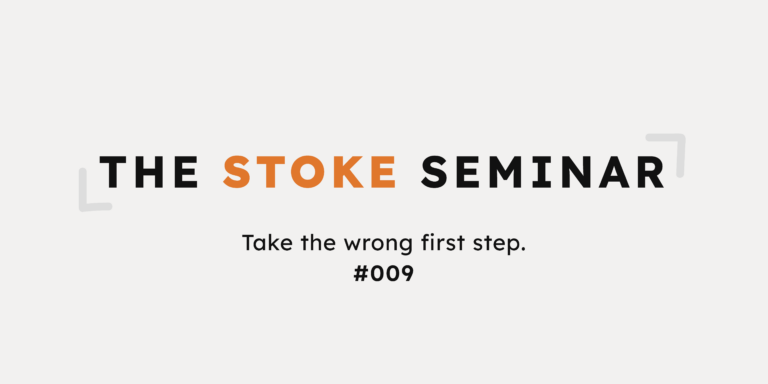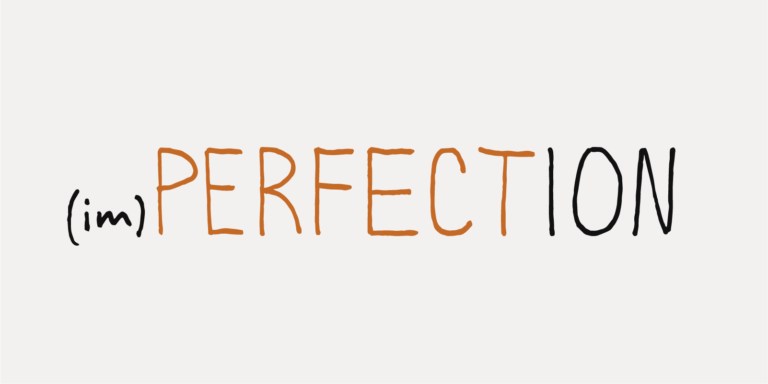How to learn 10x faster than you did in school
For most people, learning is a productive waste of time.
Instead of allowing our curiosities to direct our paths, we learned subjects that the education system determined to be important.
In school, most of my “learning” consisted of remembering just enough information for just enough time to finish my homework or pass a test.
After those tasks were complete, it was rare that I could recall any of the information.
I wasn’t digesting the information.
I wasn’t applying the information to a real project.
I wasn’t applying what I learned to a practical skill that interested me.
It’s no wonder most adults dislike the idea of learning.
In reality, we remember it as a boring activity that involves long lectures, uncomfortable desk chairs, and confusing test questions.
But as I got older, eventually dropped out of college, and entered the workforce – I began to see learning in a new light.
I discovered there’s another way to learn.
In school, we learned passively (through listening and reading). But outside of school, we learn actively (because we’re forced to figure out this “life” thing through trial and error).
Rather than shying away from learning after graduation, I embraced it fully. I became obsessed.
I wanted to learn faster about the things I was genuinely interested in.
I wanted to learn the skills that allowed me to turn my ideas into action.
I wanted to actually absorb what I was learning and apply it to the projects I was building.
Now, after several years of learning to learn, I’ve found what works best for me. Not only is learning much faster now– but it’s also much more fun.
This process is actually very simple and anyone can apply it to solve problems in their own life.
“Learning” went from long hours in uncomfortable classrooms, to following my curiosities and building projects that interest me.
The answer I’ve found is to become the teacher – not the student.
Become The Teacher, Not The Student
Most people have learning backwards. To learn effectively, you can’t be the student – you must be the teacher.
When using teaching as a form of learning, you take advantage of what is called the Feynman Technique.
Here’s how it works:
The Feynman Technique is a learning method that involves explaining a concept in simple terms as if teaching it to someone who knows nothing about it, to deepen understanding and improve retention.
The four steps of the technique are to:
- Choose a topic to learn about
- Teach it to yourself
- Identify what you don’t know
- Review and simplify
This goes to show that learning quickly is not about consumption, it’s about creation.
Instead of investing your time in reading, listening, and the passive consumption of information – balance it with discussions, practice, and teaching. These active learning methods allow you to learn faster and more effectively.
The learning pyramid helps to visualize this idea better:

To put these things into practice, here’s the process I use on a weekly basis:
- Learn new material (consume consciously – through books, podcasts, lectures, and articles)
- Teach it to yourself (via daily writing sessions – write about what you learn each day)
- Take frequent breaks to digest information (via walks & rest – activating the subconscious to digest information for us)
- Simplify material through stories, processes, and analogies (through writing + content creation)
This process is extremely effective because it not only helps you learn quickly, but naturally leads to creating content that can be shared online.
If you want to learn quickly, create weekly content, and have a full workflow for doing so – I share my process in detail in The Genius Journal.
How to Learn 10x Faster (And Have Fun Doing It)
To learn faster, more effectively, while having more fun – there are a few steps to follow.
This is the process I’ve used since quitting my job in 2022 to pursue a life of purpose. I was tired of repeating the same tasks each day and wanted to challenge myself further. Because a sense of challenge allows for a sense of purpose.
I knew I was meant for more – and this process has allowed me to do just that.
1) Use curiosity (or problems) to guide what you learn about
Rather than aimlessly learning the skills and subjects that were taught to you through the education system…
We’re gonna focus on solving problems that we’re genuinely interested in. This is the biggest hack to learning – actually being interested in what you’re spending your time on.
Use “learning” to solve your life problems.
Problems are the starting point to any kind of learning.
When you’re taking a test in school, you’re solving imaginary problems. The same applies when you’re outside of school, yet most people (myself included) overlook the problems in their life, rather than learning how to solve them.
This guide isn’t necessarily about “learning” or “studying” in school, but rather doing something meaningful with your life and finding your life’s work.
In order to do anything in life, you have to learn first.
Learning helps you:
- provide more value
- bring your ideas to life
- solve problems in your life (and find purpose in the process)
2) Decide how you’re going to apply what you’re learning
What project are you going to build? What problem are you going to solve?
- Is it a personal problem?
- A problem with society?
- A common problem you see among friends or online?
This helps guide at what “scale” you’re working in.
Don’t feel bad about solving your own problems first – this is where most people start. It’s difficult to help others before you help yourself. It’s not selfish if your end goal is to be selfless. Self-improvement precedes others-improvement.
The problems you solve for yourself can then be packaged up and used to solve that same problem in another person’s life.
Keeping the end goal in mind will help you stay motivated on your journey.
This “problem” will guide your vision and mission.
3) “Learn in public” and share your daily discoveries (through writing, video, or audio)
You don’t necessarily need to share your journey publicly (via social media, etc).
But if you do – it acts as a magnet for opportunity, collaboration, and an additional layer of feedback.
If you don’t want to share online, you can document your discoveries through journaling. This will be similarly effective in distilling your learning journey, but if you have the choice – I’d recommend building in public 🙂
(PS these newsletters are my form of learning and building in public)
Both of these processes use the Feynman Technique – which is the process of teaching what you learn to learn it more effectively (that we discussed earlier in the newsletter).
4) Split your learning up (with walks & rest)
This is important for a couple reasons.
First, it allows time for your subconscious to absorb and digest the information you’re working with.
Fun fact: Our subconscious minds can process ~11 million bits per second, while our conscious minds can process ~40 bits per second.
Because of this reason alone, working on something tirelessly for hours on end is not the most efficient way to learn:
- studying for a test for 3 hours before you take it
- trying to learn a new skill through brute force and practice
You must balance the new information you’re learning with a similar amount of practice.
- too much practice = not enough time to process small changes, feedback, and information
- too much information = not enough practice to put what you’re learning into experimentation
Second, this triggers the Zeigarnik Effect: a psychological phenomenon where people remember unfinished or interrupted tasks better than completed ones.
When we start and finish a process through to completion, our brains often flush that information out in order to process other, new information.
For example: imagine completing a task in your to-do list, checking the box, and that task now gets crossed off & grayed out.
Our brains function in a similar way.
However, when a task is incomplete in our minds, our brains “store” that information so it can be recalled easier.
When we learn, study, or work on a project over a slower, extended period of time – what we’re learning about remains fresh in our minds. This helps the information to be recalled and remembered much easier.
This triggers what’s called the spaced retention effect – aka the longer we work on something, the more information we will absorb and digest.
To practice this effectively:
1) Go for walks to break up work blocks (15-30 mins)
Between your main work blocks throughout the day, go for short outdoor walks.
This is where a majority of my creative “work” gets done.
If you aren’t in the habit of going for multiple (3-5) outdoor walks each day – there isn’t a habit I’d recommend more (besides maybe writing, but they go hand in hand).
While out for a walk: walk in silence, listen to a podcast, audiobook, or long-form (educational) video. Allow your mind to rest. Bring a notebook or phone to jot down any groundbreaking ideas that come to mind (because trust me, they’ll come).
2) Take naps (10-20 mins)
Naps have been an on & off kind of routine for me, but I’ve found them to be an extremely helpful tool for learning and recovery.
I’m a big fan of the post-lunch nap, which typically includes reading a book until I get tired → sleep for 10-15 mins → get back to work afterwards feeling refreshed.
I find that both of these things drastically improve my creativity, information retention, and information digestion.
Build a Project, Not a Study Plan
If you want to learn slowly:
- cram in as much information as possible through listening or reading (theory)
- or, spend 100% of your time experimenting (practice)
If you want to learn 10x faster:
- balance theory with real-world practice
- take breaks between learning blocks
- write about what you’re learning
- build a project WHILE learning (to practice what the theories teach)
It’s important to balance theory with practice to make sure you understand how things work in the real world.
For example: you can spend an entire month reading books, watching tutorials, and listening to podcasts about how to become a better writer.
This might be somewhat helpful.
But you’re going to learn much more about writing by opening a blank document and typing 1,000 words per day, sharing it online, and getting feedback on your work.
You need to apply the things you’re learning to a real-world project. Otherwise your learning is productive procrastination.
If I could boil my entire learning + creative process down to 3 things they’d be:
- Conscious consumption (consuming information relevant to your problems or goals)
- Writing (“teaching” the things I’m learning and digesting it through writing sessions)
- Walking (putting my subconscious mind to work for me while getting fresh air and movement)
Learning doesn’t have to be the boring task you remember dreading as a kid.
It can be an exciting journey that allows you to solve your problems, be creative, and develop a sense of purpose in the process.
That wraps up today’s letter.
If you have any feedback – I’d love to hear it. As I mentioned in the letter, this helps me learn! (Reply to this email and I’ll respond)
I had a lot of fun writing this one and invested a good amount of time into (hopefully) getting it right.
My hope is that this was helpful and encouraging to you!
Blessings,
–Eric Pfohl

